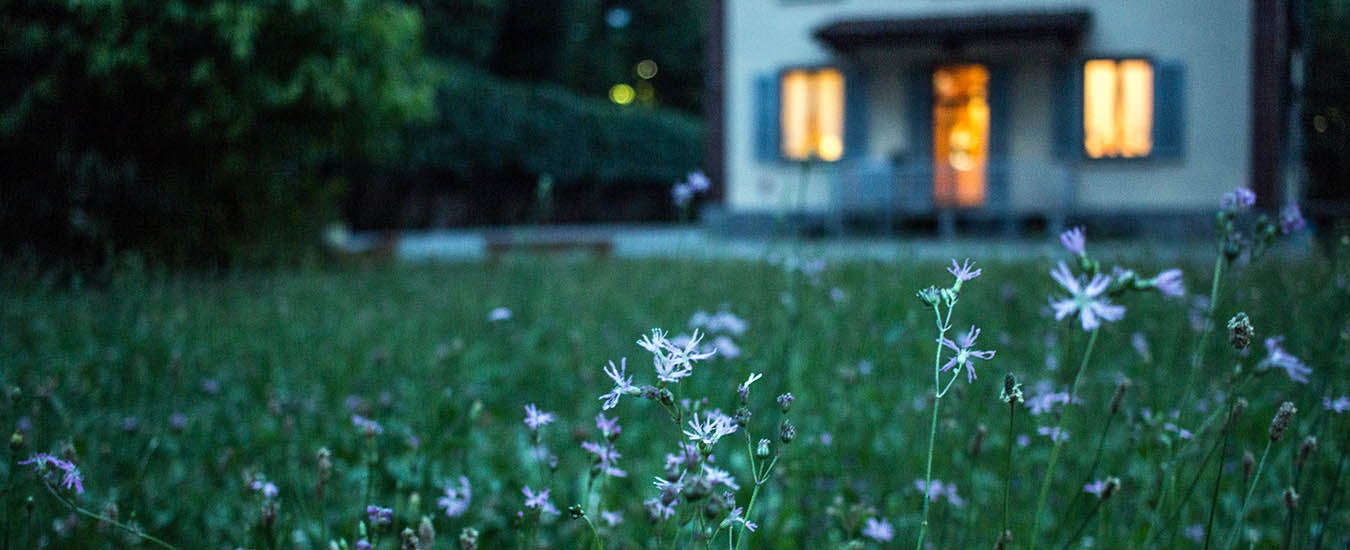The Red-breasted Nuthatch was always waiting when Ken arrived home from work, and seemed to know the routine. Ken would go into the house, get a supply of lard for the log feeder and return to the backyard. At first the nuthatch would merely follow Ken at a distance, but soon he became so greedy for the lard that he would land on the food as soon as Ken emerged outside, beginning his meal before Ken even made it to the feeder. Once, when Ken changed the routine and headed into his shed, the bird followed him inside. "I didn't try to tame him, he just did it himself," says Ken.
Ken Knowles is a trombone player, a bird photographer, and a music professor at Memorial University in St. John's. He has been feeding birds in his backyard for 25 years, first in Ontario, and then, for the last 17, in Newfoundland. His four-acre rural lot is located in the Middle Cove area of Torbay, and contains a variety of habitats-a boggy area, trees, open areas, and a pond.
On an average winter day, Ken can host up to 13 different bird species at his feeders. "There's even more in the summer," Ken says. This can mean hundreds of birds, all looking for their favourite food. "I have five feeders," says Ken. "The main one is a large platform feeder with black oil sunflower seeds on one side and mixed seed on the other."

Ken has two other platform feeders and also provides niger or thistle seeds in a long cylinder feeder for finches. The coveted lard is placed in the drilled holes of a fireplace log, which he attaches to a tree. "I use plain lard because it doesn't attract undesirable birds," says Ken. It does attract nuthatches, woodpeckers, and Boreal Chickadees. "I've never known the Boreals to eat seeds, but they'll come for the lard."
Over the years Ken has attracted 116 different species of birds to his backyard. The rarest was a European bird, most likely blown in by a storm at sea. "It was a Common Chaffinch, and it was the first accepted North American sighting record for that species," says Ken. Another time, Ken spotted a Little Blue Heron in his pond. The species is native to Florida and must have been confused enough to fly north instead of south when it migrated, says Ken.
Besides rare species, Ken also has the opportunity to observe bird activities. While the Small Sharp Shinned Hawks are regular visitors to his backyard, nothing much bothers the larger birds, he says. Until one day a large Goshawk flew in and picked off a squawking Blue jay. "The hawk took it from the feeder to the driveway, and I ran outside with my camera," says Ken. "When I approached, the hawk flew with the Blue jay to a tree, I followed and he flew a little farther to another tree. I guess he was too wary of me to keep fighting the jay so he let him go and flew off. The Blue jay was fine, but I didn't get a decent picture."
Bird enthusiasts love to spend an afternoon in Ken's backyard. He hosts local people and birders on Wing Tours, an international company that organizes nature tours. Ken has led several tours as well.
In the deep, dark, days of January and February, when woodland birds are searching harder and farther for food, it is good to know you are supplying nourishment for them in your own backyard. Ken's stories are a great example of the satisfaction and pleasure it can bring.
